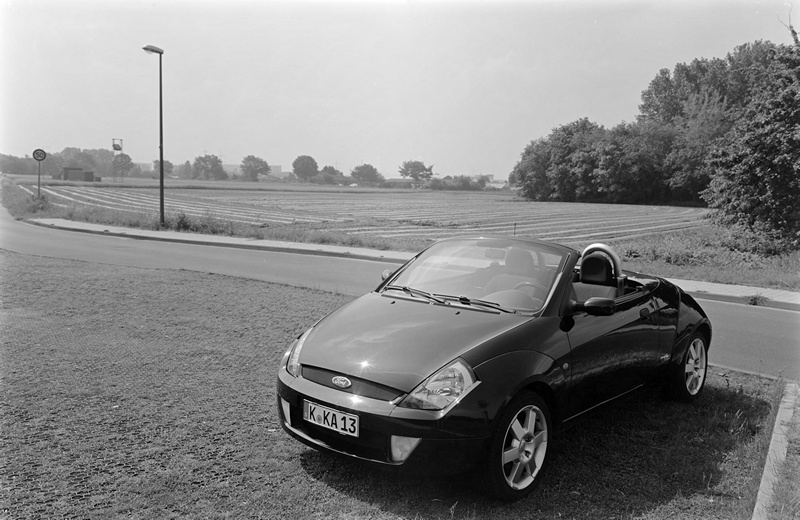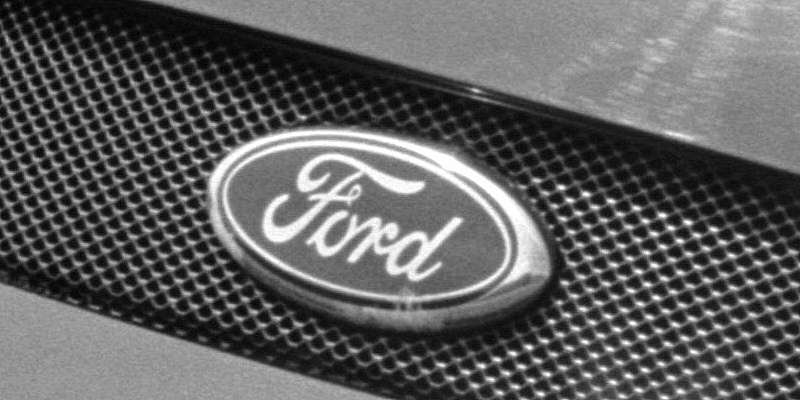Wistamiya II - Hasselblad SWC’s poor relative
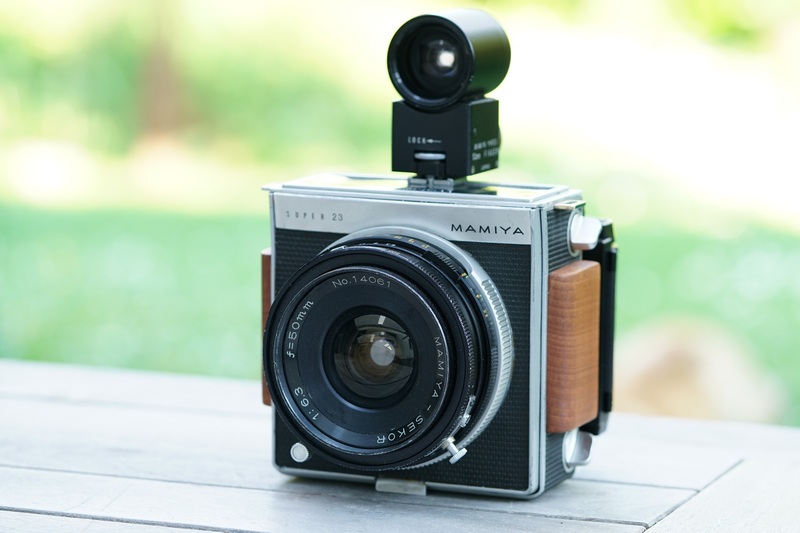
Of
course,
the craftsmanship of an old (yet only
of an old) Hasselblad far surpasses mine or even that of Mamiya. But
still,
there are similarities. And the 50mm Mamiya lens offers a similar angle
of view
on 6x9 than the 38mm Zeiss Biogon does on 6x6 (horizontally, the Mamiya
is
wider still).
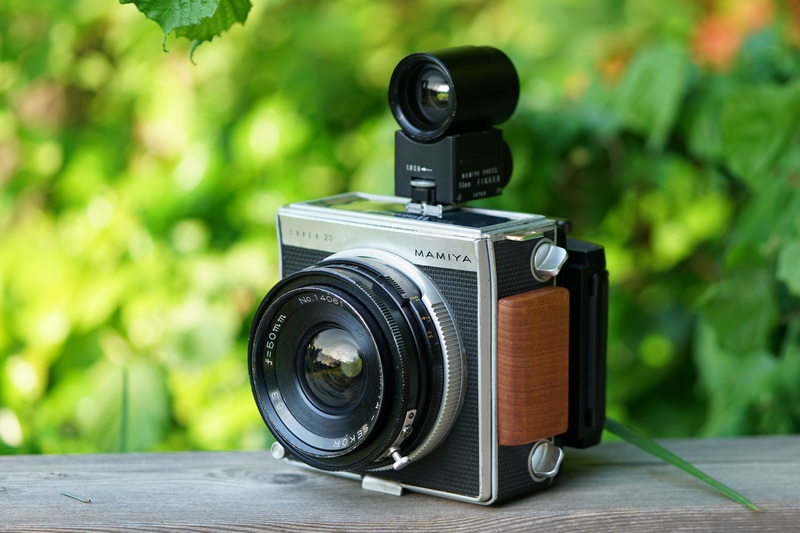
So that was
the plan: Make a more compact alternative to my first
Wistamiya (in short – cut off the rangefinder from a Mamiya
Press camera) and
retain most of its other functionality. Also, I planned to enable the
use of an
existing Wista 6x9 magazine, because the original Mamiya M magazines
are too
bulky for my taste and awkward to use (they have a good reputation for
their
film flatness, however).
Roughly speaking, there are three different kinds of Mamiya Press cameras:
- Standard and “Press”, with small rangefinder and either Mamiya M or Graflok back, some also with tiltable back
- Super 23 with large rangefinder and tiltable Mamiya M back
- Universal, with large rangefinder and fixed – but exchangeable – back
In
order to
have a more compact film holder and a tiltable back, I could have also
looked
out for a Mamiya Press with Graflok flange and cut of the rangefinder
there.
Since I already had a spare Wista magazine (and have had good
experience with
it) I decided to go for a Super 23 as basis and have adapted this back.
So the resulting camera isn’t quite unique, only just:
- It is relatively compact, but also pretty heavy at around 2 kg complete with lens, compared to below 1400 g for a Hasselblad
- It allows the use of the Wista film holder on its Mamiya M flange
- It keeps the tiltable back of the Super 23 donor camera
- And
it gains two nice side panels made of cherry wood, instead of the grip
I
plan to
take the camera to the Baltic sea this year….
Isn’t
it
remarkable how many small parts such a rangefinder contains? This is by
no
means a ‘simple’ camera.
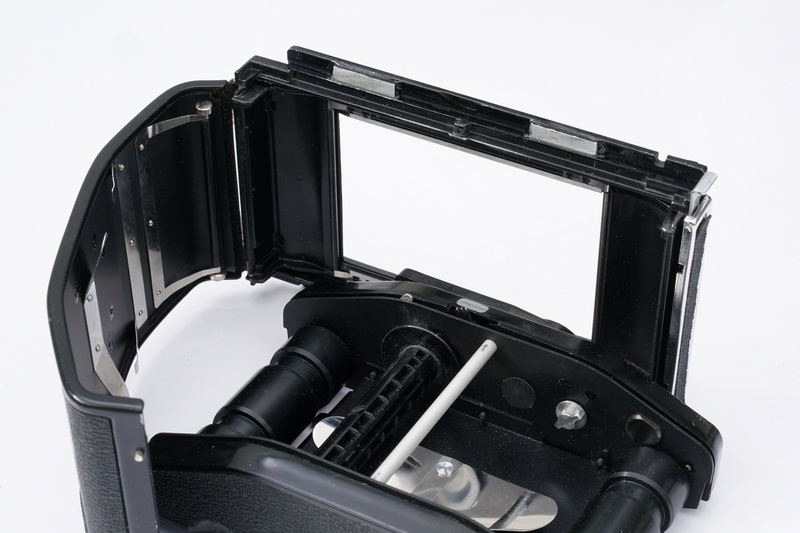
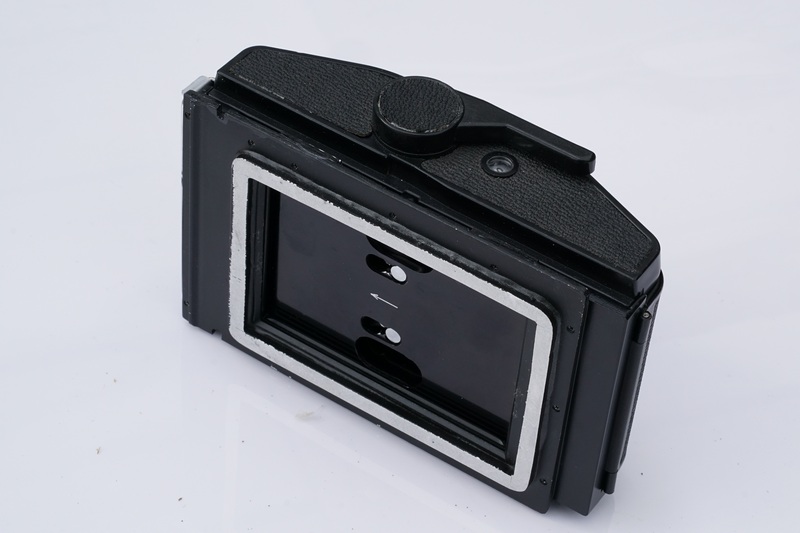
Not
much to
show here, since the amount of manual work is hardly visible. I should
really
look for a milling machine…
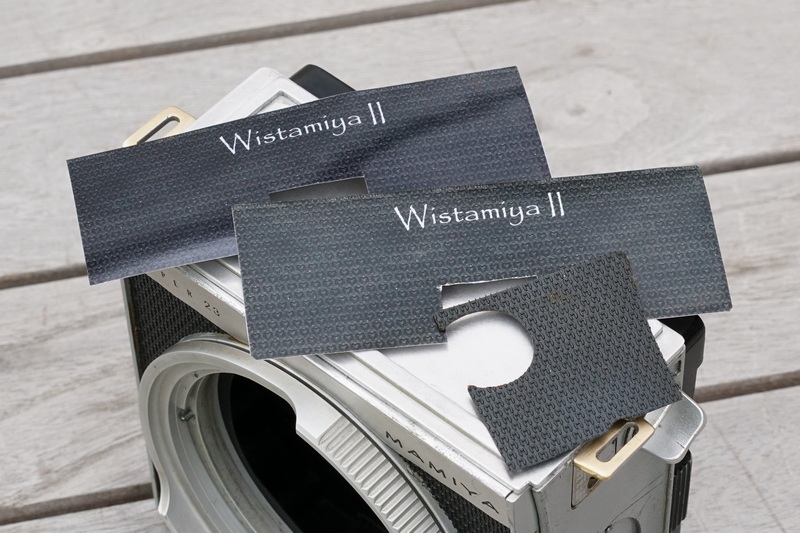
At
first,
the top plate was a simple peace of aluminium that looked pretty
boring. I did
not have enough pieces of the original camera
“leather” (with lovely little
“M”s embossed), so I fell for the idea of scanning
what I had and multiplying
and printing a large enough piece. As it turned out, it is pretty
difficult to
get a good color match, but the result looks funny nevertheless.
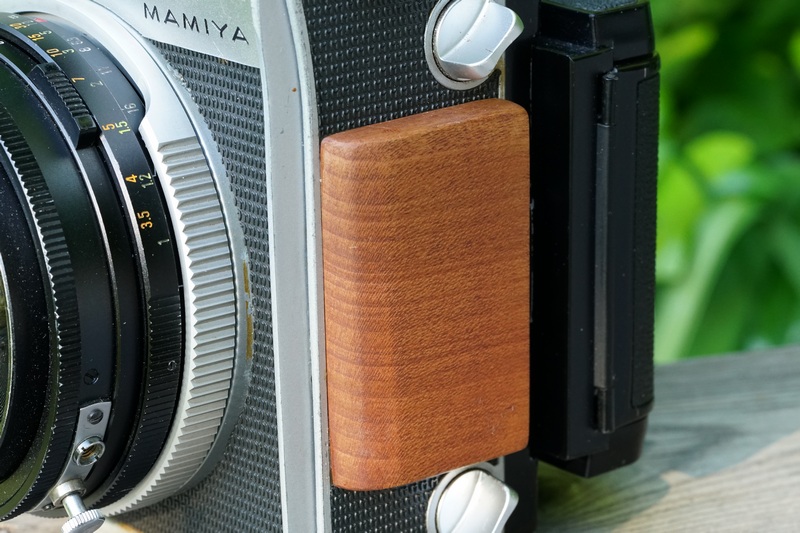
The
standard Press cameras bear a very functional but bulky grip, that I
have no
use for, since I am no Japanese newspaper reporter. Instead, I have
produced
these small side panels from cherry wood and I even plan for a wood
turning
alternative.

The
original Mamiya finders can be adjusted according to the distance to
the
subject, to correct for the parallax error between finder axis and
camera
optical axis. Since the finder now sits lower, the values given on the
adjusting wheel are no longer correct. I have calculated new values and
have
indicated them instead of the feet scale. This way, I can now use the
finders
both on a regular Press camera (using the white scale) and –
using the yellow
scale – on this camera.
This
is how
the resulting camera looks with the back extended and with the right
angle
finder:
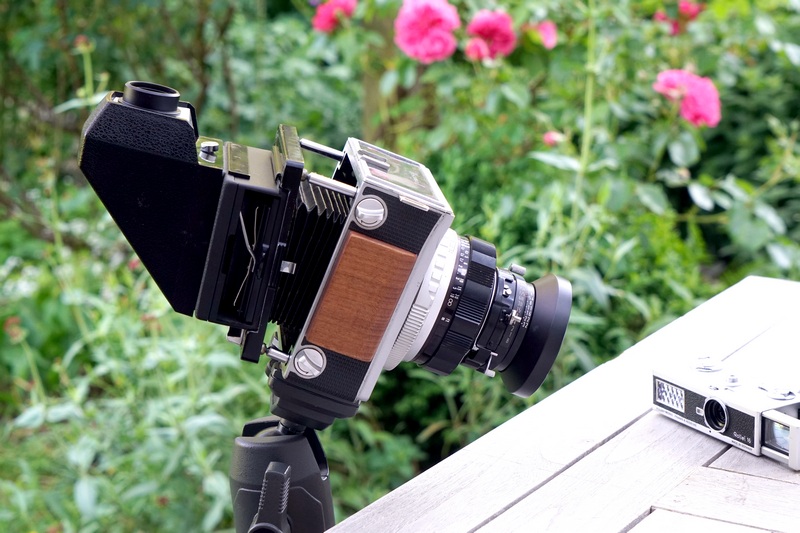
Shown
here
with the (very good) 5,6/75 lens:


Ford's nice Streeka Roadster, built 2003-2005, taken on Fuji Acros 100 (very good film) with the 50mm Mamiya Sekor:
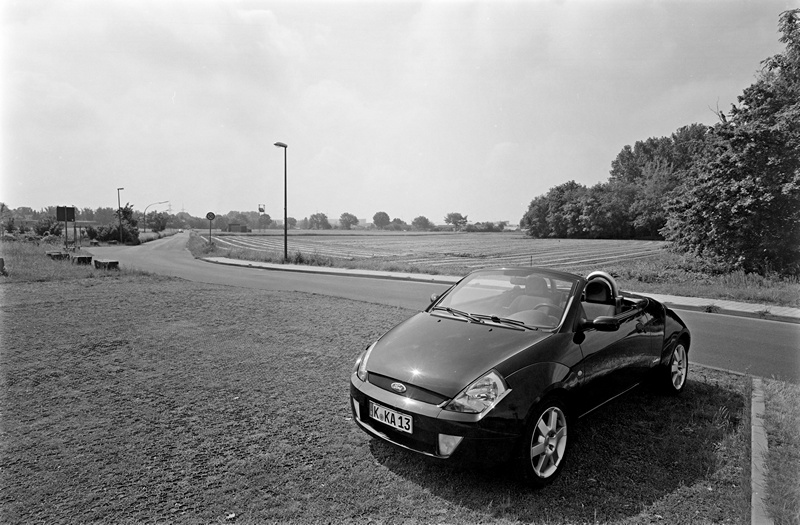
And here with the 75mm:
